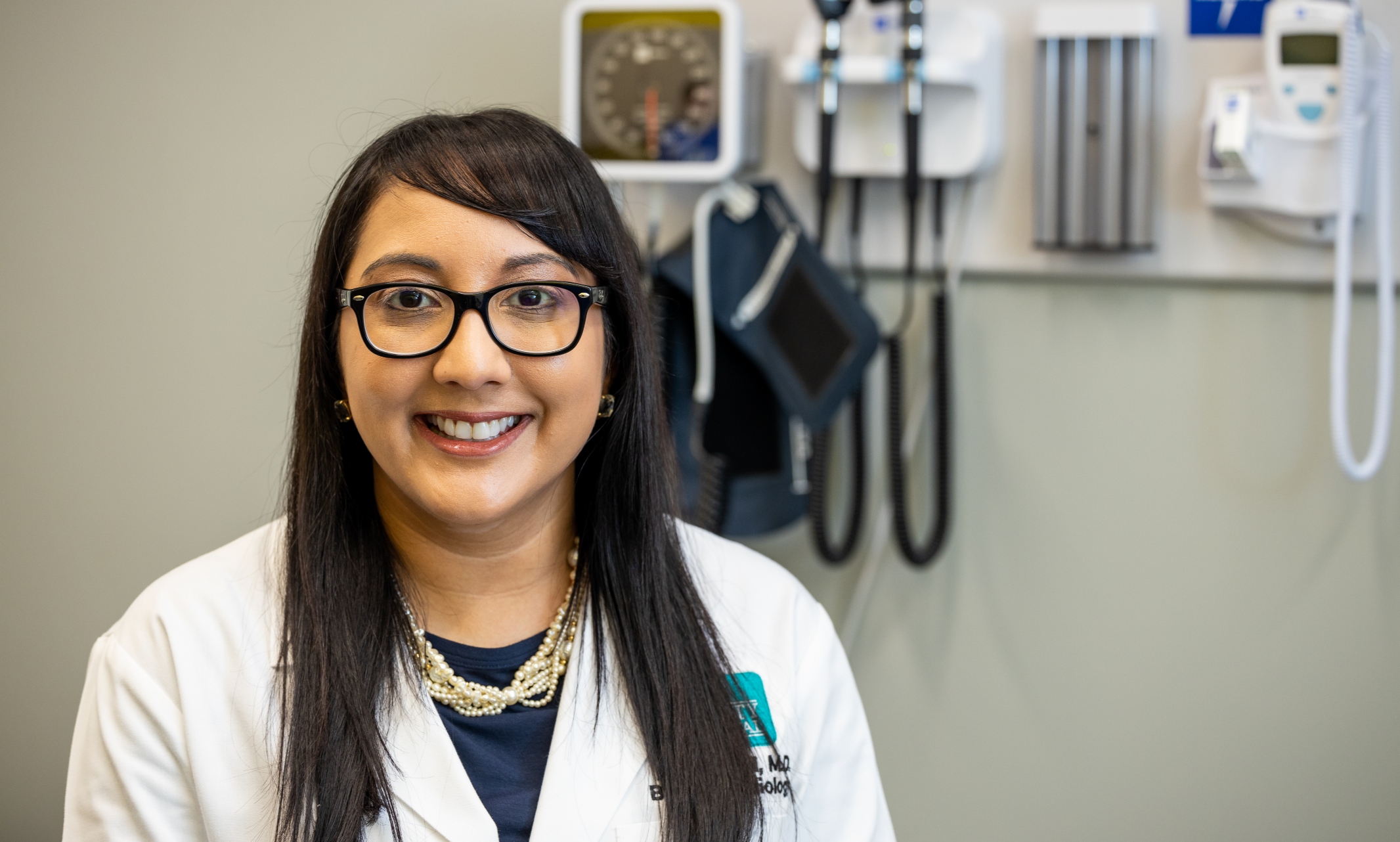Amy Patel, M.D., of the University of Missouri-Kansas City School of Medicine, played a leading role in bringing about a new law in Missouri that requires health insurance companies to pay the full cost of diagnostic breast imaging without charging patients a co-pay or deductible.
Patel is an assistant professor of radiology at UMKC, medical director of the Breast Care Center at Liberty Hospital and a 2011 alumna of the UMKC School of Medicine. She worked closely with State Rep. Brenda Shields and the Susan G. Komen organization to get the legislation drafted and passed. The legislation also had support from The Missouri State Medical Association, Missouri Radiological Society and the Missouri Society of Pathologists. Gov. Mike Parson signed the bill into law in July, and it takes effect in January 2024.
Diagnostic imaging tests, such as 3D mammograms, MRIs or ultrasound exams, play a critical role in getting patients an early start in treating breast cancer, which greatly improves odds of overcoming the disease.
This was not Patel’s first foray into advocacy on behalf of patients. In 2020, she campaigned for a new law that requires insurance companies to pay for breast cancer screenings for patients ages 25 to 29 if they are at higher risk, as well as screenings every six months from age 30.
In 2022, Patel was named the Kansas City Chiefs Fan of the Year in recognition of her role as a leading community advocate for access to breast cancer treatment care.
We caught up with Patel on the new legislation.
What is the primary significance of this new law?
This law requires Missouri insurance carriers to cover diagnostic breast imaging for patients without co-pay or deductible. This means that if a patient is called back for additional breast imaging testing such as a diagnostic mammogram, ultrasound or MRI, it must be covered without co-pay or deductible. Diagnostic breast imaging also encompasses patients who present with a lump or pain, or who have had prior surgeries for breast cancer which necessitate a diagnostic mammogram follow-up for a number of years.
Have you had experiences with patients who delayed diagnostic breast imaging because of the cost? What are the implications of that?
Unfortunately, yes. We have had patients who do not return for additional diagnostic breast imaging testing when we know they have a breast cancer we need to address, and/or they return or present when the cancer has spread to the lymph nodes in the armpit and even other parts of the bodies at times.
Is that why you worked so hard on this?
I worked hard on this because I live and breathe this every day in clinical practice. Patient access and bridging the gap of breast care inequities has become a life's calling and a focus of my career. I felt that I was in a position to advocate for change, and although we were not successful in getting this legislation passed last year, we soldiered on this year and were successful. Too many lives depended on it for us to not continue to fight for patient access.
How does advocating for important changes like this demonstrate your commitment to your mission as assistant professor of radiology at UMKC School of Medicine?
As much as I do have an avid interest in education and research, I feel that it is equally imperative to commit efforts to boots-on-the-ground advocacy and access. As I always say: what good is the research we do if we are not going to take that information and do something about it to positively and directly affect our patients? Through evidence-based care, we can bridge the gap of breast care inequities, and I am so appreciative that I am able to do this type of work, which is valued and respected by the UMKC School of Medicine.

